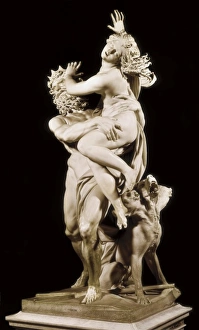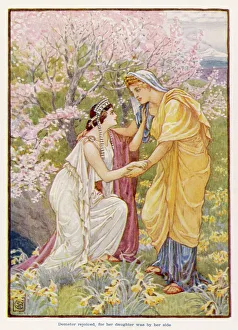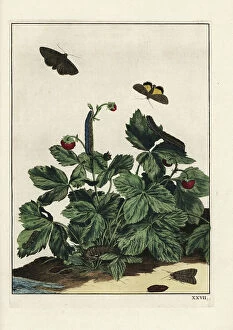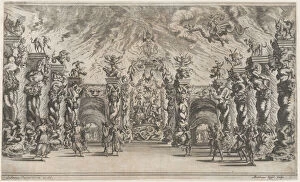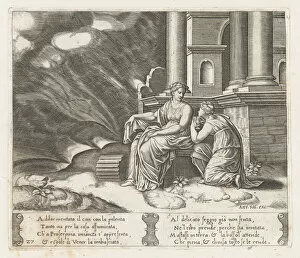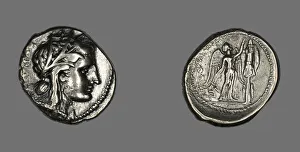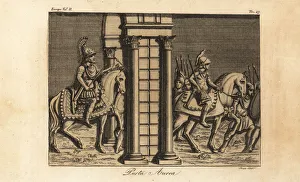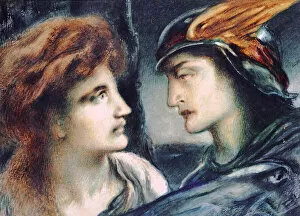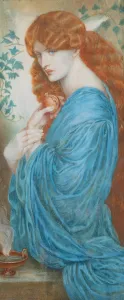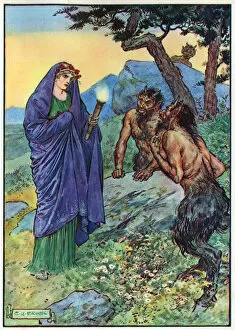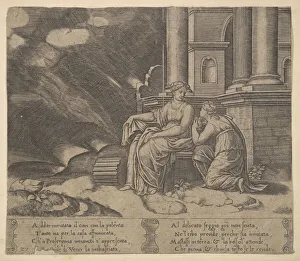Proserpina Collection
Proserpina, also known as Persephone, is a prominent figure in Greek and Roman mythology. She is the daughter of Zeus and Demeter, the goddess of agriculture
All Professionally Made to Order for Quick Shipping
Proserpina, also known as Persephone, is a prominent figure in Greek and Roman mythology. She is the daughter of Zeus and Demeter, the goddess of agriculture. Proserpina's story revolves around her abduction by Pluto, the god of the underworld. One notable depiction of this mythological tale is captured in Bernini's sculpture titled "Pluto. " This masterpiece showcases Proserpina seated beside Pluto on his throne in the kingdom of Hades. The intricate details and lifelike expressions bring this captivating scene to life. Another portrayal can be found in a plate from the Story of Cupid and Psyche series by Master of the Die. In Plate 27, Proserpine presents Psyche with a box containing beauty—an essential element within their enchanting love story. The theme continues with various artistic interpretations such as "The Rape of Proserpine, " an oil painting that vividly portrays her abduction by Pluto. This dramatic piece captures both sorrow and anguish while highlighting Proserpina's vulnerability. A different perspective can be seen through ancient artifacts like the Knob-Handled Patera dish created by Baltimore Painter during 330-320 BCE. Its intricate design depicts scenes from Greek mythology, including figures like Proserpina alongside other principal gods residing on Mount Olympus. In another lithograph artwork titled "King Pluto and Proserpina, " we witness their regal presence amidst a fantastical landscape—a testament to their divine status within Roman folklore. Visiting Rome offers an opportunity to see these mythical representations up close at Museo Borghese's Galleria col ratto di Proserpina or even witnessing frescoes depicting "The Rape of Prosepine. " Not limited to visual arts alone, literature also explores this mythological narrative. Orpheus Playing the Lyre to Hades and Persephone tells a tale where Orpheus uses his musical talents to charm the gods of the underworld, including Proserpina.

